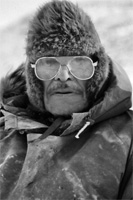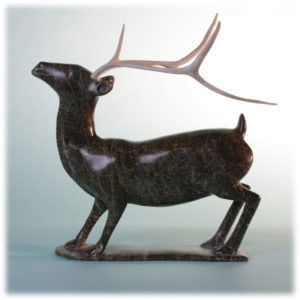Osuitok Ipeelee

Cape Dorset, Nunavut Territory, Canada
(1923-2005)
Osuitok Ipeelee was an Inuk sculptor who lived in Cape Dorset, Nunavut. His sculptures in green soapstone of caribou and birds are particularly esteemed for their balance and delicacy. Osuitok grew up traditionally on the land and learned to carve by watching his father, Ohotok. He sold his first ivory carving in the 1940s and was already highly regarded for his artistry by the time that James Houston arrived in 1951. Osuitok participated in the introduction of the printmaking program in the late 1950s and his work was in the “Sculpture/Inuit. Sculpture of the Inuit: Masterworks of the Canadian Arctic” show (1971-73) that toured the world. His sculptures gradually became more stylized and minimal; by the late 1980s, his austere renderings of caribou were more symbol than depiction.
With the onset of Parkinson’s, Osuitok could no longer produce sculpture at the level of his classic work, but his simpler imagery is a logical progression of where his artistic direction was taking him before the disease. Historically one of the most influential Inuit sculptors, his work is in international collections, including the National Gallery of Canada, the Metropolitan Museum of Art in New York and the Vatican Collection. In 2004, Osuitok received the Lifetime Aboriginal Art Achievement Award.
Showing the single result

